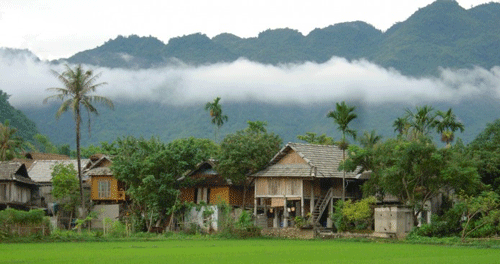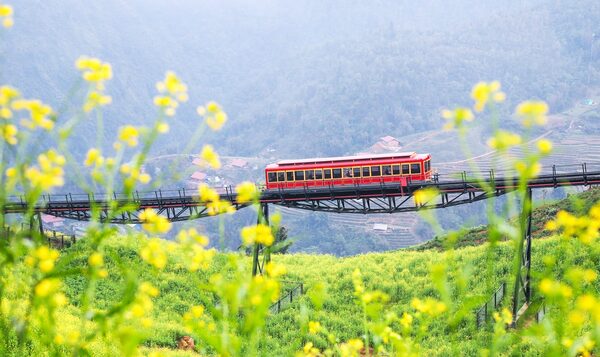Vietnamese folk paintings have retained and developed certain traditional aspects because of the result of cultural exchange.
Moreover, the genius of other painting styles has influenced Vietnamese folk paintings. There are four traditional folk painting styles in Vietnam: Dong Ho, Hang Trong, Kim Hoang, and Sinh village.
Folk paintings reflect Vietnamese culture and belief. The Vietnamese believe in their ancestor worship and deification of natural phenomena. Due to their historical popularity, folk paintings were produced in large quantities. Depending on artistic style, drawing-printing technique, and the materials used, folk paintings are classified into painting trends according to the name of their place of production.
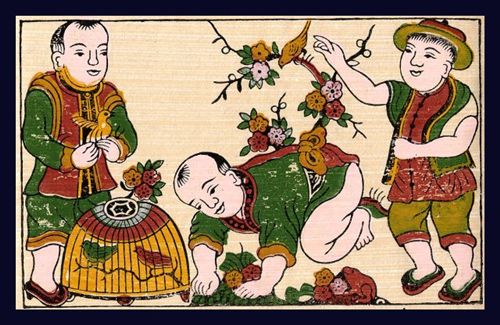
Hang Trong paintings
Hang Trong paintings are also printed with black lines to form the basis for the color. But, unlike Dong Ho paintings, they are made by hand. Large sheets of imported paper and brightly colored paints are used for Hang Trong paintings. The content of these paintings are very much influenced by Chinese drawings.
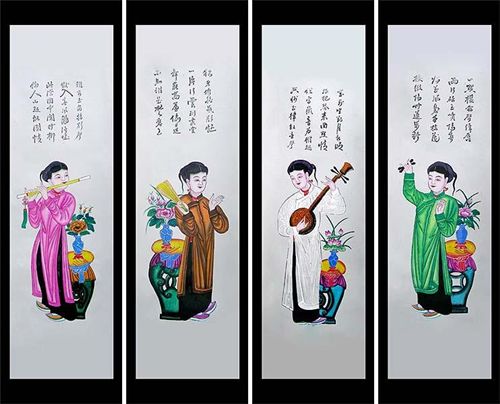
Hang Trong paintings are popular as worshipping paintings in temples. As such, the paintings are often hung in spacious living rooms or in holy places. Hang Trong paintings have traditionally served the poorer classes and are made and sold in the capital city.
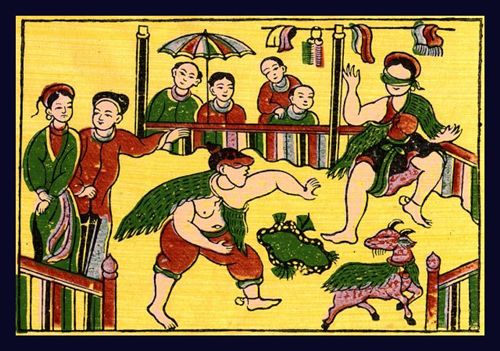
Dong Ho paintings
These paintings which originated in the Red River Delta are the most famous. The artists coat do paper (the Rhamnoneuron paper) with Diep powder (a white powder made from the shells of diep, a kind of fluvial bivalve mollusk) to make silver luster glitter. Sometimes yellow flower powder called Hoa Hoe or orange-red Sapandwood powder is used to make the colors more elegant and shiny.
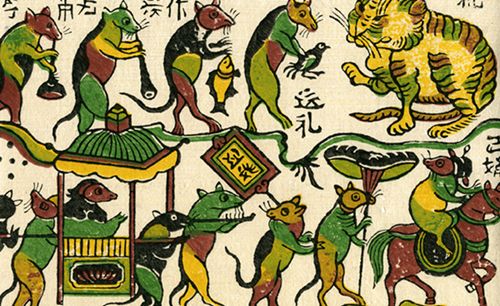
On that background, the colors are applied with a woodblock. Some of the paintings only have simple black lines, while others are printed with one other color. All of the materials for creating the colors for these paintings come from nature. A wide spectrum of colors can be made using mixing and multi-colored printing techniques.
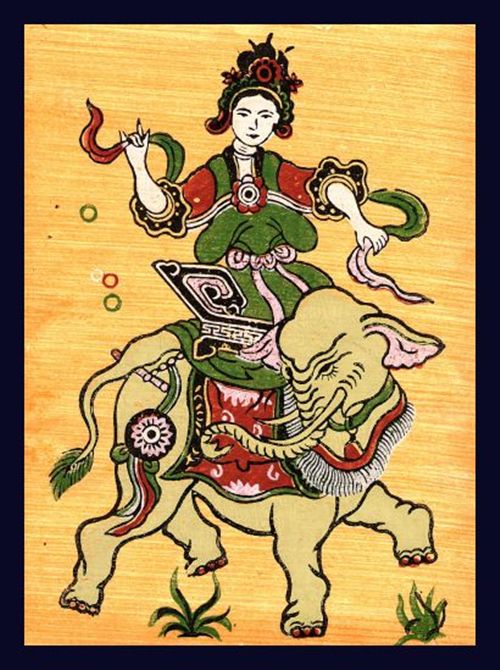
Dong Ho paintings reflect people’s innermost feelings, wishes, and simple dreams. Because the paintings appeal to so many people, they are available throughout the country, from the village markets to the capital city.
Kim Hoang paintings
Kim Hoang paintings, which are often called red paintings, are made on the outskirts of ancient Thang Long. Kim Hoang paintings are printed and drawn on imported colored paper (yellow, bright red, pink) and printed with black lines and shapes; other colors used to separate the shapes.
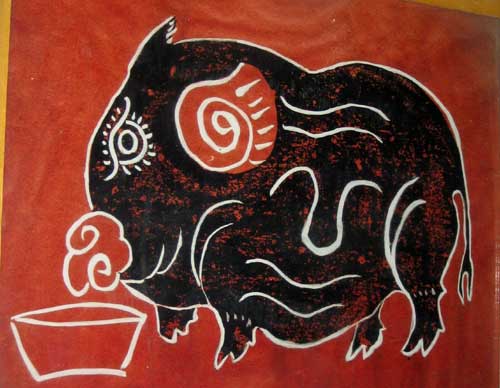
The colors are applied in rough, but flexible lines. Sometimes, the paintings are reprinted to create clear line. The colors used for Kim Hoang paintings are bought and then mixed by the painters, except for indigo, which is self-processed. The themes of Kim Hoang paintings are similar to those of the Dong Ho paintings, but there are also Chinese character paintings Phuc, Loc,Tho (meaning “Happiness”, “Good Luck”, and “Longevity” respectively), that have the typical flower of each season printed next to each character.
Sinh Village paintings
Sinh Village (Làng Sình) Paintings, which come from Sinh Village, a suburb of Hue City, are well-known in the central Viet Nam. Most Sinh Village paintings are used for worship, and they express the mystical, nature-based beliefs of the ancient Vietnamese.
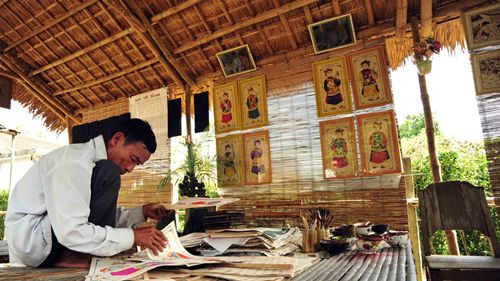
Among these pictures is the Tuong Ba (Statue of the Lady) painting, the guardian angel of women. Sinh paintings are made using just one printing-board to create the drawing lines and black shapes. After being printed in black, the work is sometimes completed with embellishments made with colorful lines. Some paintings are still printed on rustic paper.
Each style of painting is different. However, in all the styles, shapes are created based on the concept of “don tuyen binh do” (single line-simple designs), which uses lines to bend the colored shapes and to make a border for the picture. Another method used is “thuan tay hay mat” (easy to draw and to see). With this design form, the folk paintings do not depend on the rules of perspective. The deities are large and take the upper positions, while the ordinary people are drawn on a smaller scale and the size of the animals and the natural scenery depicted depends on their relationship to the sentiment or story being expressed. These unique characteristics make the paintings profoundly impressive.










